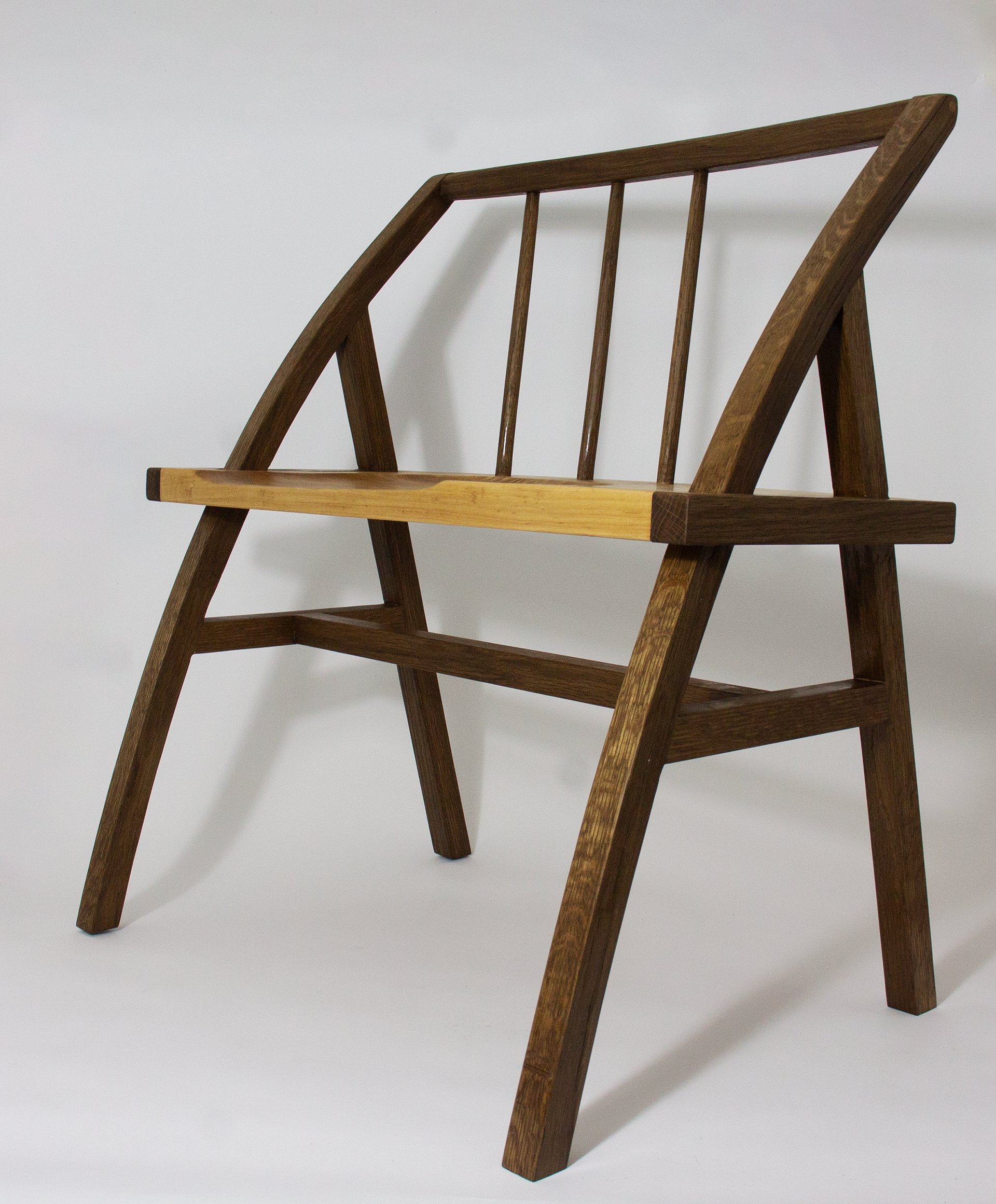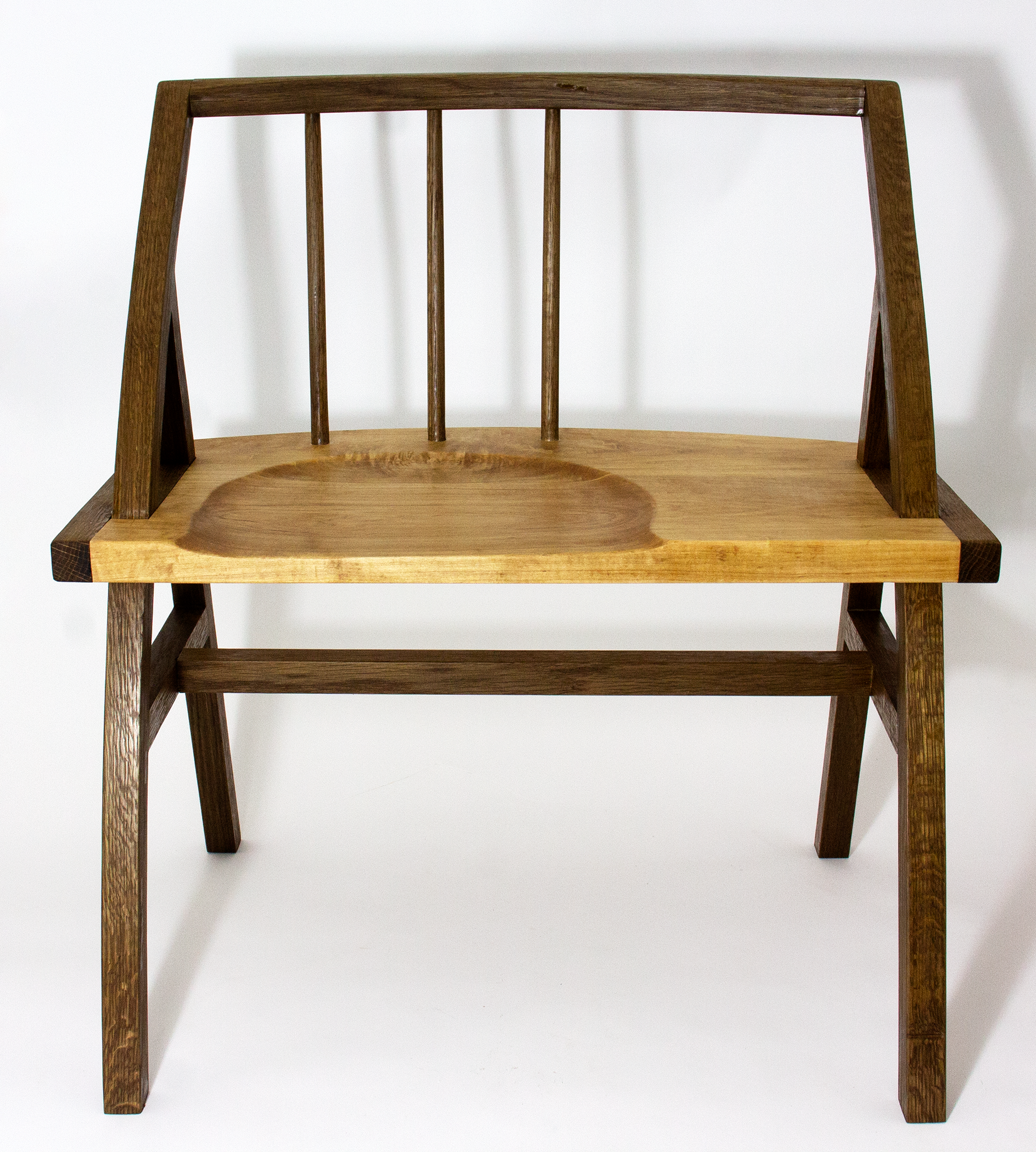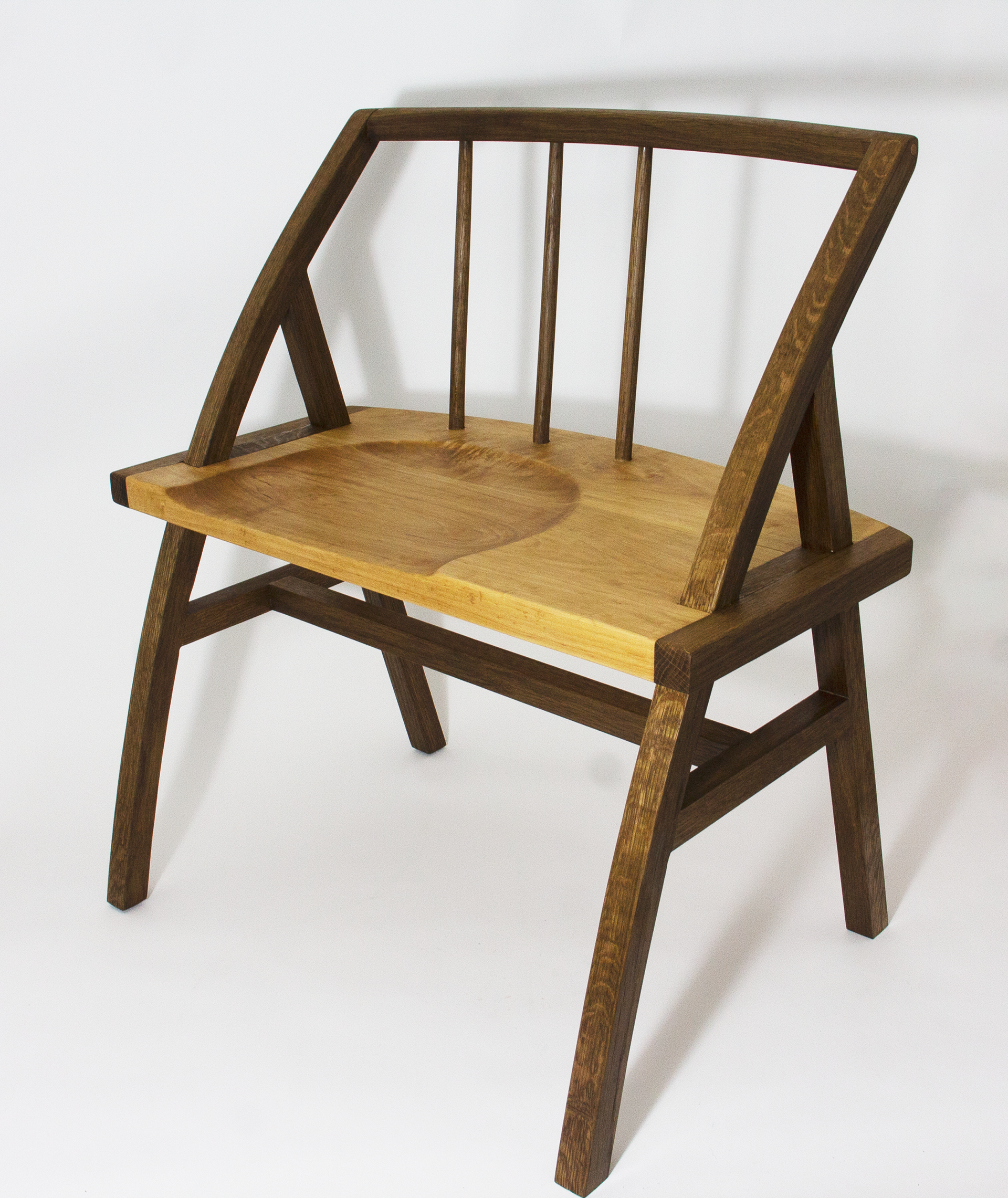Traditional Chair Making Practice
Small Stools
Traditional hand tools including spokeshaves and rotary planes were used to shape the legs of two small stools. A soft wood model (left) was made to practice using the tools and understand how to operate and sharpen them. Each leg join was wedged to secure to The second, a hardwood stool was manufactured using both machines and manual tools including bandsaws and wood turning lathe. The hardwood stool was manufactured from beech and oak. The material was finished to high quality by working through the sandpaper grits and applying a coat of Osmo oil to protect it.
Practice in softwood, Plywood and Pine Final stool in Beech and Oak.
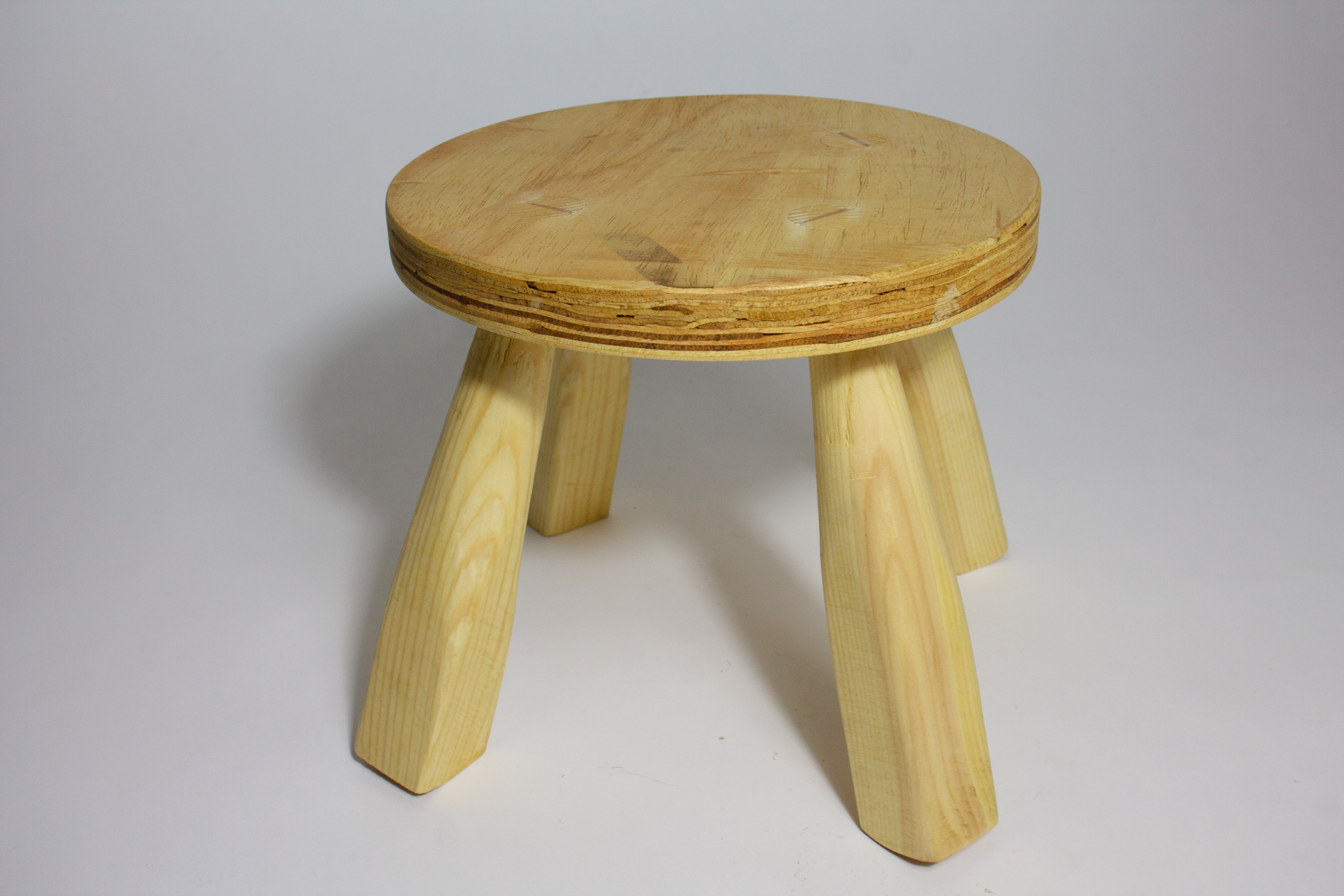
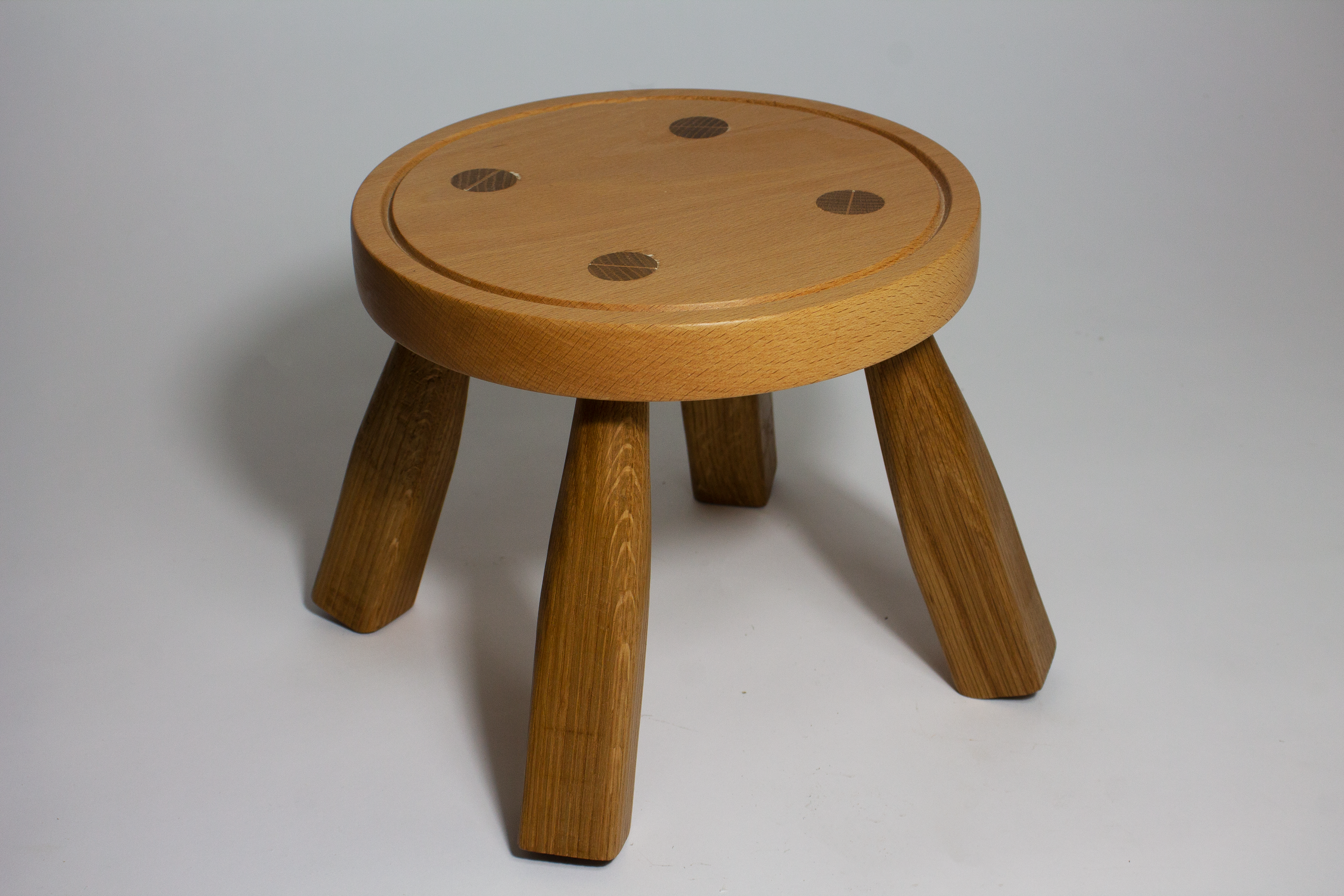
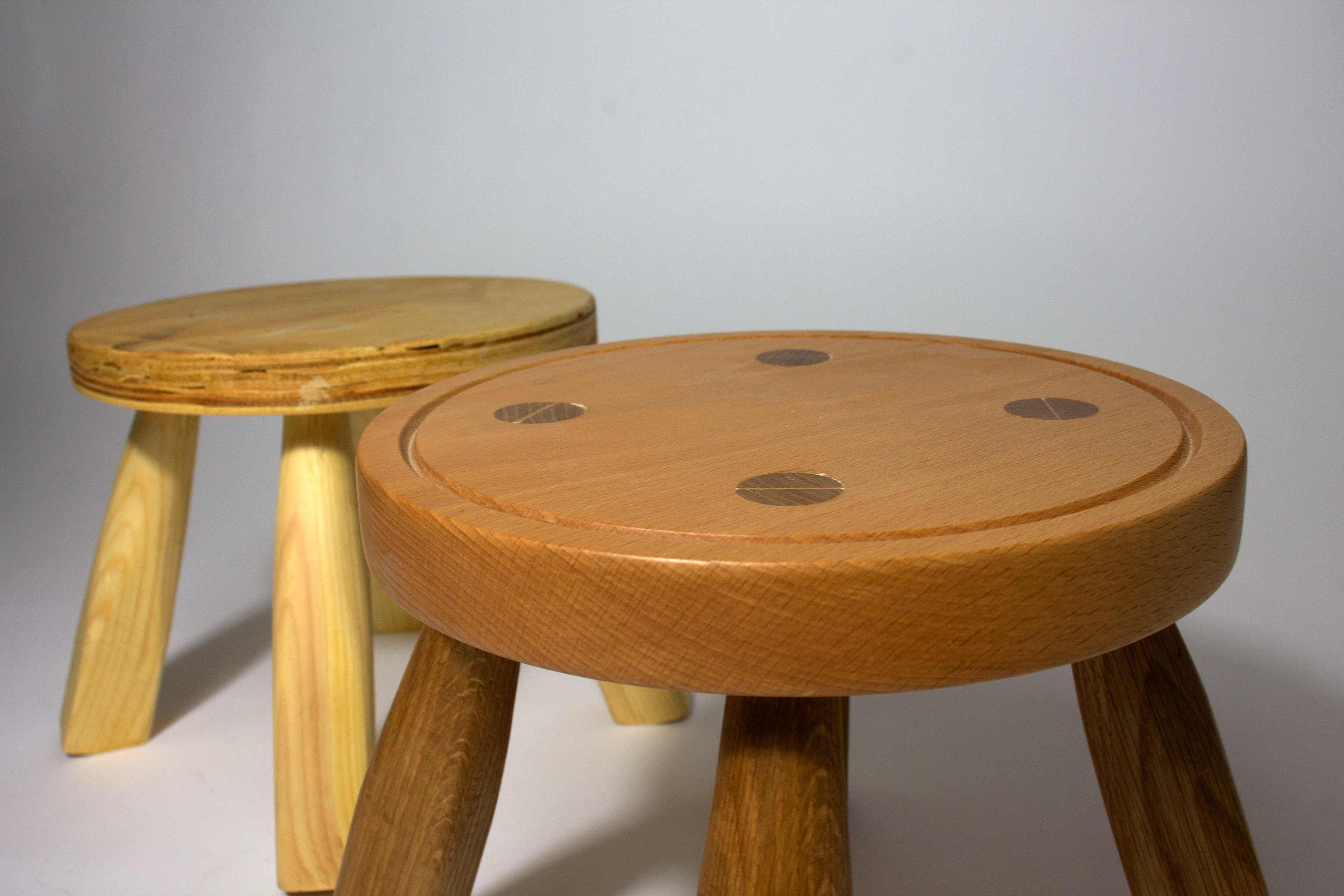
Children's Windsor Bow-Back Chair
Spokes and legs were turned on the lathe and holes were drilled at the corresponding angles to secure them in position to structure the children's chair. Each turning blank was shaped from quarter-sawn European Oak and exposed to ammonia to darken the colour and highlight the contrast of the medullary rays.
Maple was used for the steam bend for the backrest. The maple seat was shaped using an angle grinder and sanded to a high quality finish, ensuring comfort.
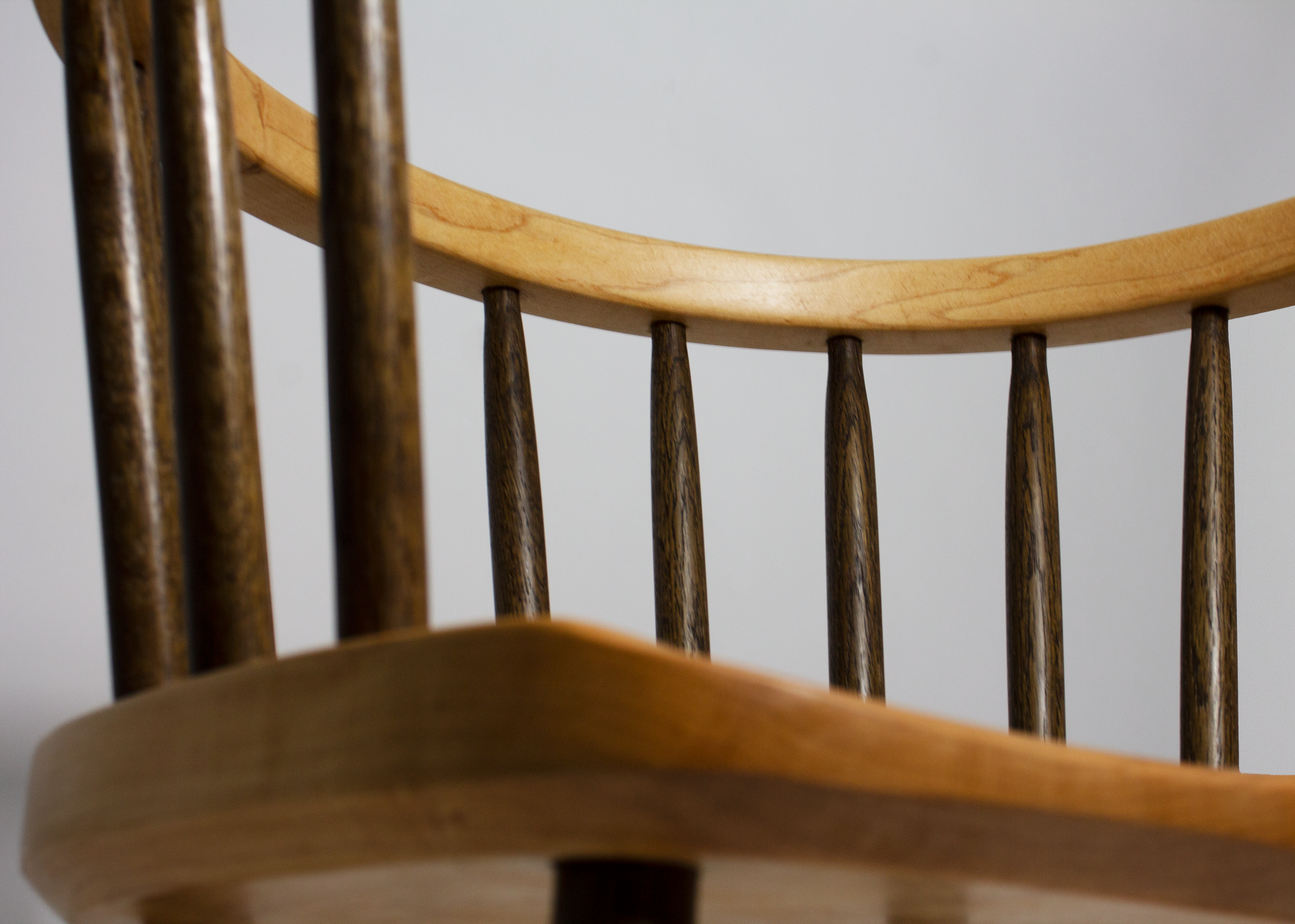
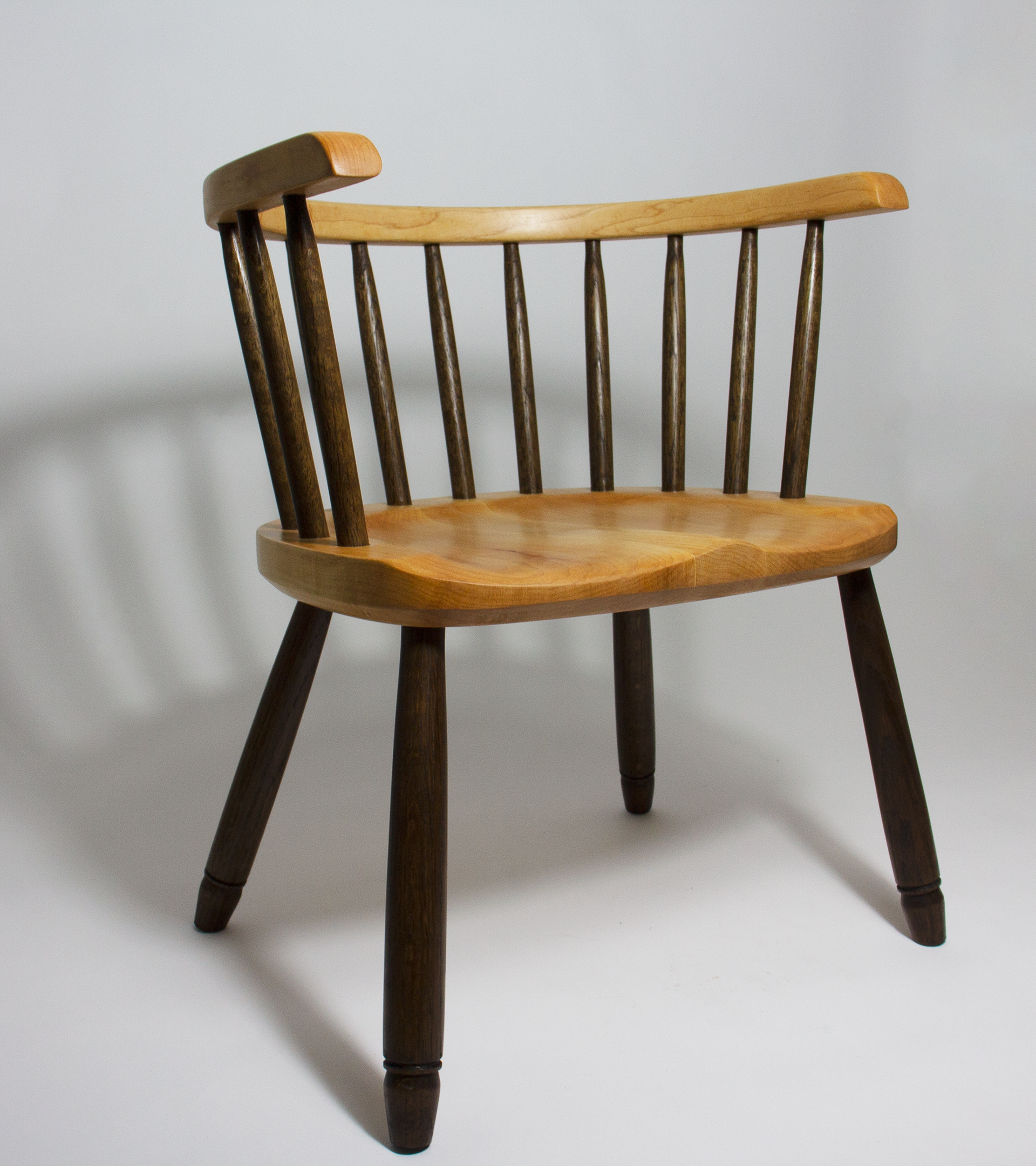
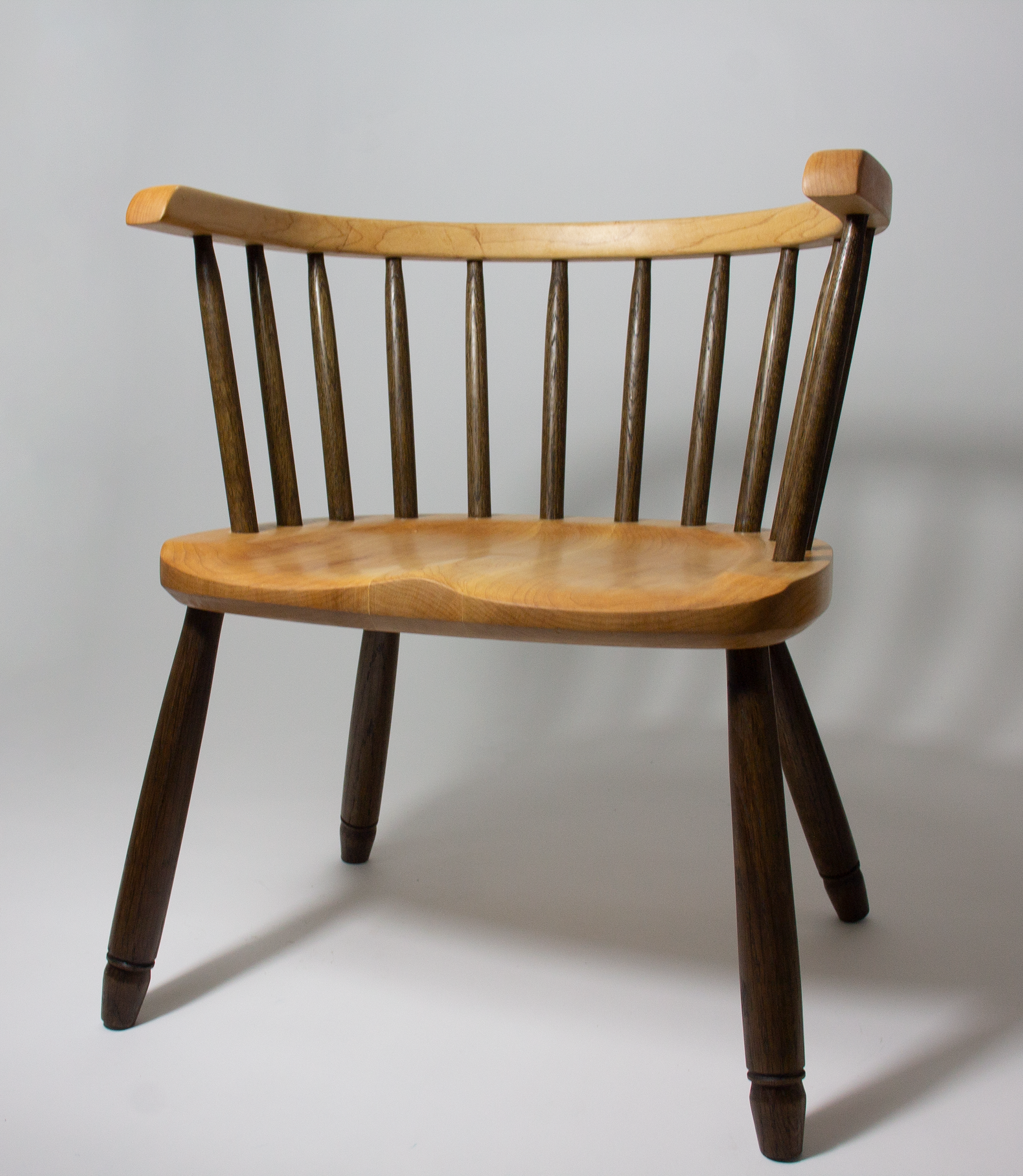
A Seat for a Book and a Cup of Tea
A Seat for a Book and a Cup of Tea serves as a place to relax and unwind. With its off-centre carved seat, it provides a comfortable space to put your phone aside and enjoy what’s in front of you.
Inspired by the iconic Eames Lounge Chair, with its striking golden edge and rich exterior, this chair features a contrasting oak frame and maple seat. In fuming the final design the tannins in the oak react with the ammonia, darkening the outer layers of the wood to a deep brown and yellowing the paleness of the maple. Oiling the seat emphasises the duality created during the fumigation process, strengthening the impact of the design.
The higher seat was an intentional feature of the design, inspired by a piano seat I used to sit on with my Grandad. Having a taller place to perch, the seat is easy to sit and raise from, making the designer more accessible as a place to rest.
The design utilises the processes and knowledge learned during the making of the smaller wood working projects and showcases the development in practical skills.
